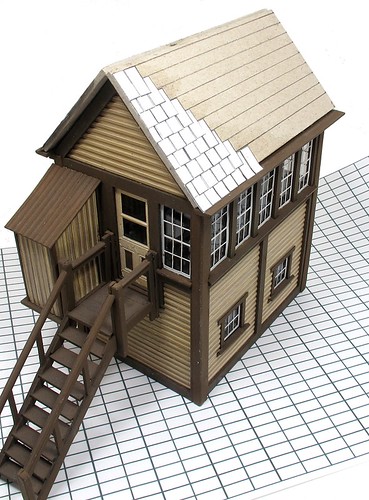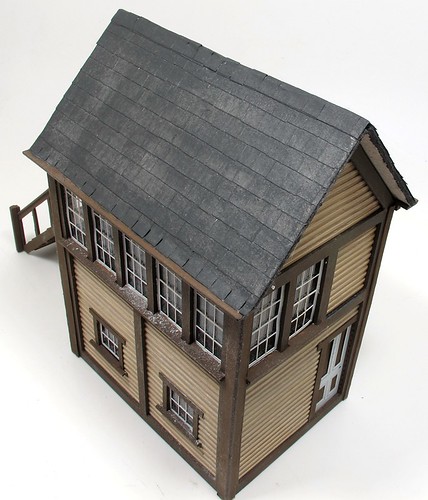A daily updated blog typed by someone with painty hands, oil under his fingernails and the smell of solder in his nostrils who likes making all sort of models and miniatures. And fixing things.
Tuesday, January 06, 2015
Slating the roof
The most obvious job required on the signal box is finishing off the roof. For help with this, I turned to Alan Downes nemesis and another master modeller - Iain Robinson.
Some time ago, he wrote a superb piece on his blog covering slate for the roof. If there's too much reading for you, print out this beautifully illustrated guide, which tells you most of what you need to know and looks brilliant on the railway room wall at the same time.
Iain produced a sheet of pre-marked out Countess sized slates and a quick e-mail saw me the proud owner of the file for this, albeit in 4mm scale. Telling my printer to run a couple of copies off at 175% sorted this out for my O gauge building.
Each tile was stuck to the cardboard roof with PVA glue from a pound shop - a big bottle that will do fine for this sort of job. After a while, picking a tile up with tweezers from the pile of pre-chopped ones became quick and easy. Not unpleasant either - I did the job while watching The Ipcress File on TV. You need a nice simple, repetitive job like this while trying to follow a complex plot and enjoy the excellent archive footage of London.
Painting slates is something I've always struggled with. Picking out individual ones never looks right to me so I cheated here and whacked a coat of Humbrol 69, Tank Grey (Update: Humbrol 67, not 69!) , over the lot and then worked talcum powder into the nearly dry surface followed by a coat of Testors Dullcote.
Labels:
buildings,
model railway,
signal box
Subscribe to:
Post Comments (Atom)


5 comments:
The roof is looking great, Phil and I am glad that the file was of use. I think you have the colouring pretty much spot-on. I had forgotten about the talc method, I must roll that one out again soon judging by the results you have achieved!
Perhaps a timy amount of colour variation would have been nice, but the effect is pretty good as it stands and so easy to do.
Looks great Phil, interesting technique. Humbrol 67?
Sorry, you're right, Humbrol 67. 69 is bright yellow!
I hate to say this Phil, considering how much work I've seen you put into individually painting tiles on this here blog, but to me that's one of the best rooves? I've seen from you.
Post a Comment